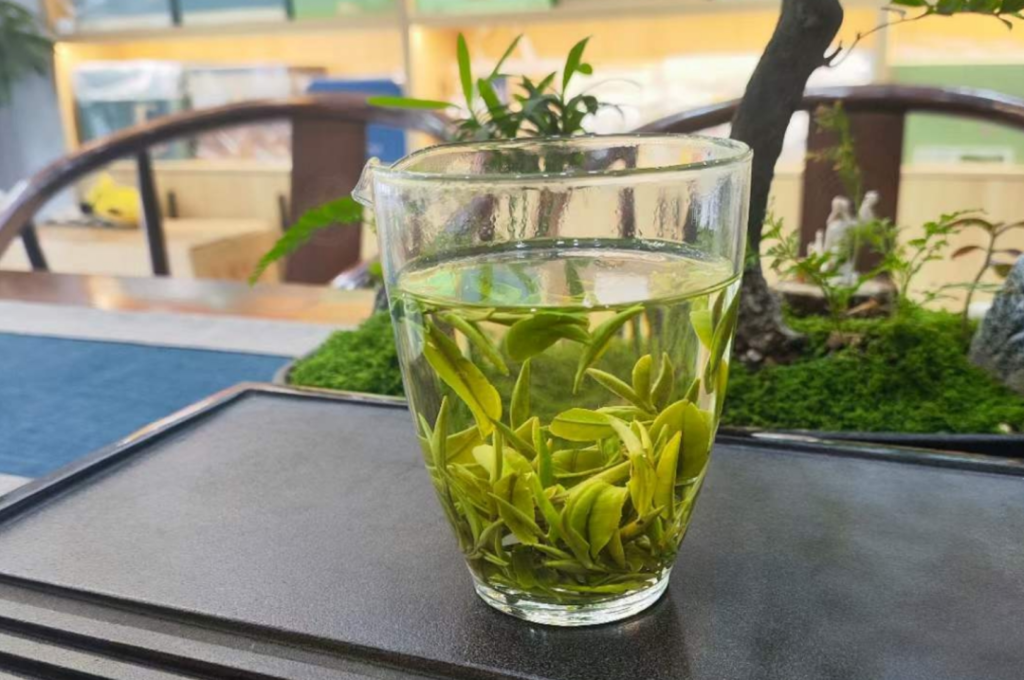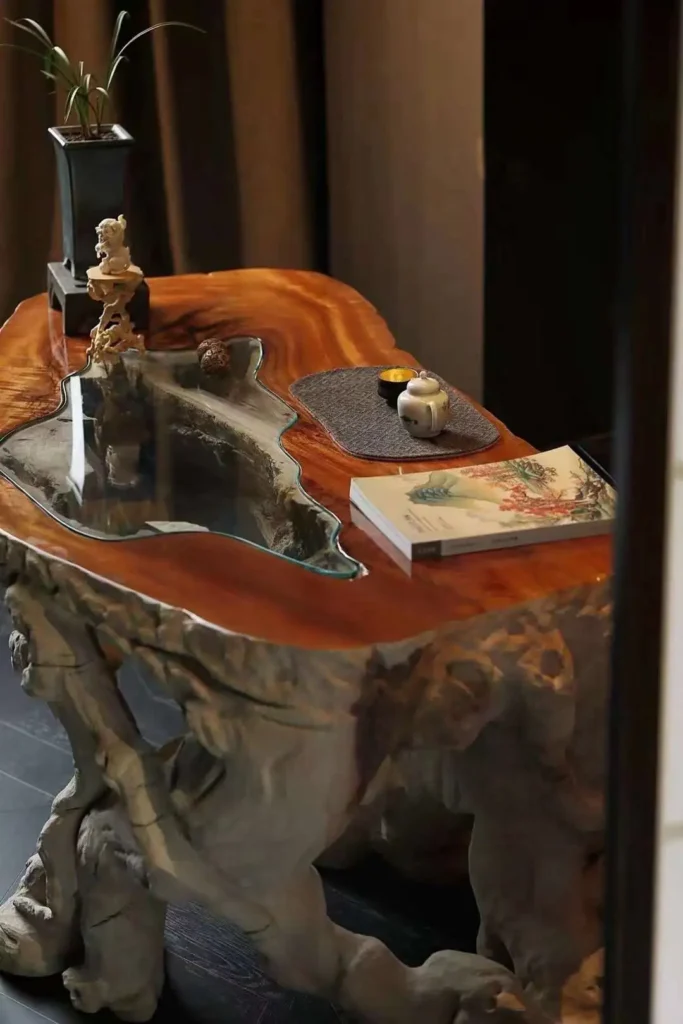Green tea is an unfermented type of tea that is processed through fixing, shaping, and drying, preserving the natural substances found in fresh leaves. Its dry tea appears green, and when brewed, the tea soup is emerald green with a jade green leaf bottom, rich in aroma and fresh, sweet, and mellow taste.
Originating in China, green tea is widely distributed in areas such as Henan, Guizhou, Zhejiang, and is also cultivated in Japan, Thailand, North Korea, and South Korea. Due to its lack of fermentation, green tea retains more natural substances from fresh leaves, such as polyphenols and caffeine, with over 85% retention. This forms the unique characteristics of green tea, known for its ‘clear soup and green leaves, with a strong astringent taste’.
Green tea not only has the effects of refreshing the mind and clearing heat but is also rich in nutritional components. Commonly known varieties include Biluochun, West Lake Longjing, Huangshan Maofeng, and Xinyang Maojian.
1. West Lake Longjing
West Lake Longjing is one of China’s famous green teas, produced in the Longjing Village area of the West Lake District in Hangzhou, Zhejiang Province. Authentic West Lake Longjing tea leaves are flat and smooth, with a green color and serrated edges, uniform in size, and free of fragments. It has a distinct fried bean aroma, sometimes described as having a raw rice and orchid bean fragrance, with a fresh taste and a unique sweet flavor that lingers. The brewed tea soup is clear and bright, with a light green or yellow-green color, and the brewed leaves are tender and green, evenly blooming. The Longjing tea from Shifeng Mountain is considered the best in quality and is also known as ‘Shifeng Longjing’.
2. Dongting Biluochun
Dongting Biluochun comes from the Dongting Mountain area of Wuxian County, Taihu Lake, Suzhou City, Jiangsu Province. The geographical environment here provides unique natural conditions for tea trees, conducive to enhancing the quality of tea leaves. Biluochun tea leaves are spiral-shaped, slender and compact, with visible white hairs, resembling small screws, which is one of its distinctive features.
The tea leaves are silver-green and shiny. Biluochun has a fresh and unique floral aroma, known as ‘startling fragrance’, with a fresh and lasting aroma that is very charming. The taste is fresh and sweet, with a lingering aftertaste, a delicate and smooth mouthfeel, and a clear and bright tea soup, yellow-green in color. The history of Biluochun dates back to the Tang Dynasty and is listed as a tribute.
3. Taiping Houkui
Taiping Houkui is a unique Chinese green tea, produced in Xinming Township, Longmen Township, SanKou Town, and Xianyuan Town in Huangshan District (formerly Taiping County), Anhui Province. Taiping Houkui tea leaves are flat and straight, uniform in size, with a green color, clear veins, and wavy blunt teeth on the edges. The tea leaves embrace a bud with two leaves, known as ‘two knives sandwiching a spear’, meaning the leaves are evenly arranged on both sides, with a pointed bud protruding in the middle. Taiping Houkui’s tea soup is clear and bright, with a lake green color, featuring a fresh chestnut aroma and a lasting aftertaste.
The taste of the tea is fresh and invigorating, with a rich and mellow mouthfeel, and a long-lasting aroma, characterized by ‘high fragrance in the first infusion, rich taste in the second, and lingering fragrance in the third and fourth infusions.’
Lu’an Guapian, originating from Lu’an City and its surrounding areas in Anhui Province, is renowned for its superior tea quality in Yu’an District and Shucheng County. The tea leaves of Lu’an Guapian are flat and elongated, resembling watermelon seeds, with a vibrant green color, smooth edges, and are unique among green teas for being stem and bud-free. The tea soup is clear in color, fresh in taste, and has a lasting aroma, featuring a distinctive ‘chestnut fragrance.’ The history of Lu’an Guapian dates back to the Tang Dynasty, where it was listed as a tribute.
Xinyang Maojian, also known as Yu Maofeng, is one of the top ten famous teas in China and belongs to the green tea category. It is produced in the Shihe District, Pingqiao District, and Luoshan County of Xinyang City, Henan Province, with the best quality coming from the Shihe District. The unique geographical environment, with its moderate mountain altitude, frequent mist, moderate sunlight, and humid air, is highly conducive to tea plant growth. The tea leaves of Xinyang Maojian are delicate, needle-like, with visible white hairs, vibrant green color, and elegant peak shape, commonly described as ‘delicate, round, shiny, straight, with abundant white hairs, high aroma, rich taste, and green tea soup color.’


